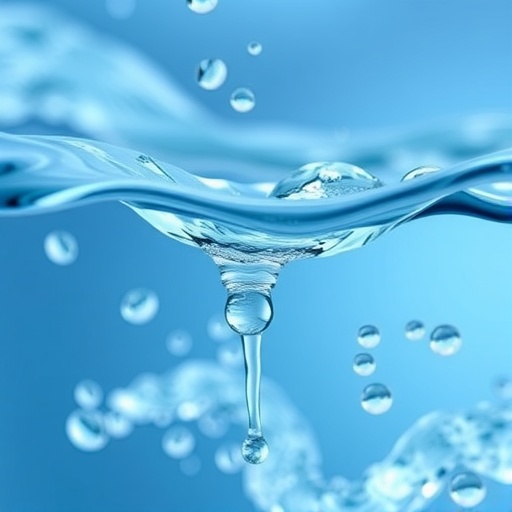Recent advancements in water purification technologies have increasingly focused on the utilization of nanomaterials, particularly in the realm of capacitive deionization (CDI). A groundbreaking study led by Kumar, Yadvendu, and Gupta highlights the potential of molybdenum disulfide (MoS2) nanosheet electrodes in enhancing the efficiency of water purification systems. As the global demand for clean water continues to rise, innovative solutions like those presented in this research bear significance for both sustainable development and environmental conservation.
The challenges associated with traditional water purification methods are manifold. Conventional processes such as reverse osmosis and activated carbon filtration often entail high energy consumption and costly operational expenses. These limitations underscore the urgent need for alternative approaches that are not only effective but also economically feasible for widespread implementation. The introduction of MoS2 nanosheets into the CDI framework represents a significant breakthrough, merging the desirable characteristics of nanomaterials with advanced electrochemical techniques.
MoS2 is a transition metal dichalcogenide with unique electronic and optical properties, making it an attractive candidate for electrochemical applications. Its layered structure permits a high surface area, essential for maximizing ion adsorption during the deionization process. Moreover, the conductivity of MoS2 can be tuned, enhancing its performance in charge storage and ion transport. Such properties are pivotal for ensuring that capacitive deionization processes run efficiently and effectively, with the potential to reduce the costs traditionally affiliated with water treatment.
The study conducted by Kumar et al. meticulously evaluates the performance of MoS2 nanosheet electrodes under varying conditions. Through experiments designed to simulate real-world scenarios, researchers demonstrated that these nanosheets exhibit superior ion removal capabilities when compared to conventional electrode materials. The findings reveal that the MoS2-based electrodes can achieve significantly higher salt removal efficiencies, heralding a new era in water purification technology that leverages nanotechnology.
Moreover, the findings underscore the scalability of the MoS2-based CDI systems. Scalability is a vital consideration for the widespread adoption of any new technology. Kumar and colleagues detailed processes for synthesizing these nanosheets that can be adapted for large-scale production. By establishing methods that maintain the integrity and performance of the nanosheets while reducing the costs associated with their manufacture, the team has laid the groundwork for future industrial applications.
One of the most compelling aspects of this research is its environmentally friendly approach. With rising concerns over environmental sustainability, it is critical to adopt methods that not only purify water but also minimize harm to natural ecosystems. The study indicates that MoS2 nanosheets can be produced with lower energy inputs and can also be intentionally designed to be biodegradable. This dual benefit positions the research as an ideal solution for water purification in areas where traditional materials pose a greater threat to local environments.
The electrochemical properties of MoS2 were thoroughly examined, illustrating its enhanced performance in cyclic voltammetry and charge-discharge testing. Such detailed analyses not only affirm the efficacy of the MoS2 nanosheets in CDI systems but also provide insights into the mechanisms of ion transport and storage. By dissecting these electrochemical characteristics, the research adds a valuable layer of understanding to the operational principles underlying capacitive deionization.
As urbanization continues to accelerate, many regions face acute water scarcity. Traditional desalination techniques, while effective, are often plagued by issues of high energy requirements and resultant environmental impact. The ability of MoS2 nanosheet electrodes to not only recycle freshwater from salinized sources but also improve overall system efficiency is a game changer. The research presents a viable alternative for regions grappling with limited access to potable water, potentially transforming livelihoods and promoting public health.
This research does not merely address the technical aspects; it also calls attention to policy implications. As technological innovations in water purification emerge, aligning them with sustainable practices becomes essential. Policymakers must recognize the importance of investing in advanced materials research like that of MoS2 to ensure broader-reaching impacts in global water security strategies. The integration of science and policy is necessary to fully capitalize on the benefits offered by innovative technologies.
Networking and collaboration among researchers, industry leaders, and policymakers are crucial for advancing these findings from the laboratory to practical implementations. The implications of this research extend beyond academia, potentially influencing sectors ranging from agriculture to rapid urban development. By fostering an ecosystem that supports research commercialization and incentivizes sustainable practice, the pathway toward cleaner, safer water becomes more achievable.
Furthermore, public awareness regarding the advancements in water purification technology remains vital. Educating communities about the significance of the developments in CDI systems can spur collective action and urgency surrounding water conservation efforts. As the world increasingly grapples with climate change and its impacts on water resources, disseminating knowledge about efficient and sustainable water treatment options is crucial.
In conclusion, the promising results from the study by Kumar et al. mark a critical juncture in the field of water purification technologies. Utilizing MoS2 nanosheet electrodes in capacitive deionization systems holds transformative potential for addressing global water crises. By paving the way for innovation while remaining mindful of environmental sustainability, this research not only lays a foundation for future technological advancements but also signifies a responsible approach to one of humanity’s most pressing challenges—access to clean water.
Subject of Research: Molybdenum disulfide (MoS2) nanosheet electrodes for capacitive deionization-based water purification.
Article Title: MoS2 nanosheet electrodes for capacitive deionization-based water purification.
Article References:
Kumar, R., Yadvendu, V., Gupta, R.K. et al. MoS2 nanosheet electrodes for capacitive deionization-based water purification.
Ionics (2025). https://doi.org/10.1007/s11581-025-06725-z
Image Credits: AI Generated
DOI: https://doi.org/10.1007/s11581-025-06725-z
Keywords: Capacitive deionization, water purification, MoS2, nanomaterials, sustainability, electrochemical properties.
Tags: advanced materials for clean watercapacitive deionization technologychallenges in traditional water purification methodselectrochemical applications of MoS2energy-efficient water treatment technologiesenvironmental conservation through water purificationhigh surface area materials for ion adsorptioninnovative water purification methodsMoS2 nanosheets in water purificationnanomaterials for water treatmentsustainable water purification solutionstransition metal dichalcogenides in CDI





